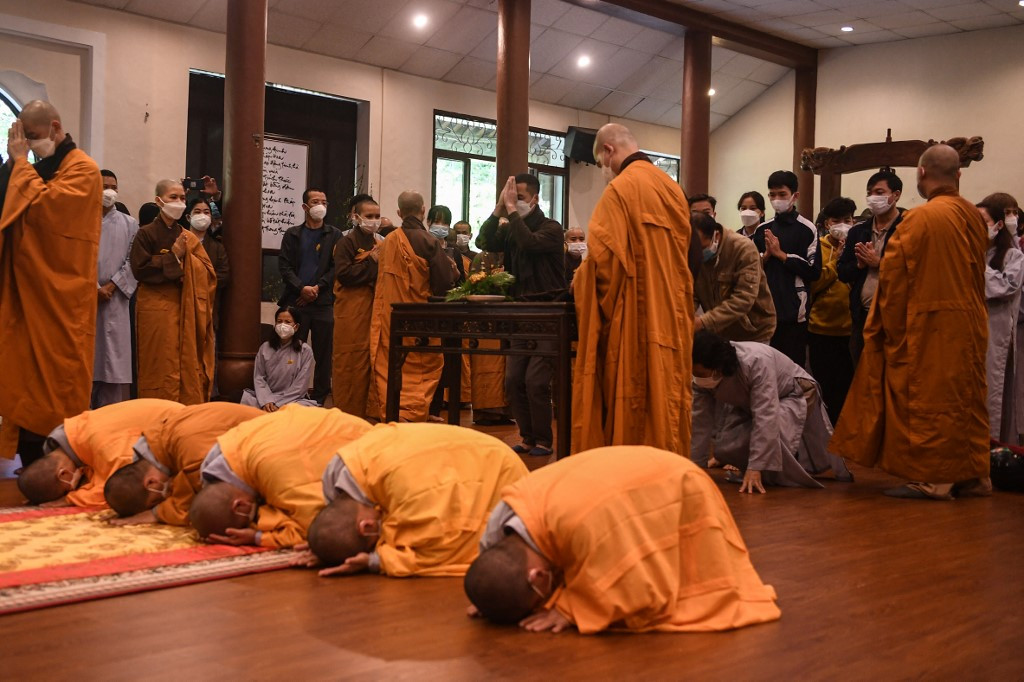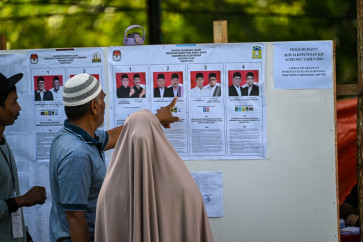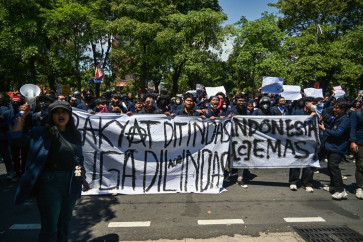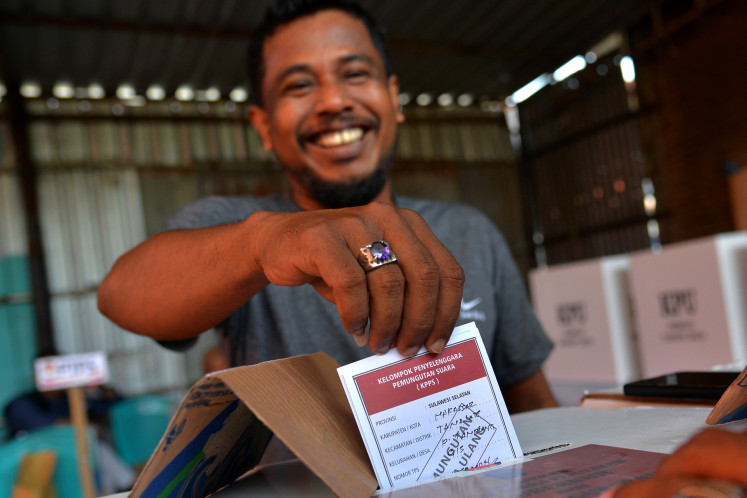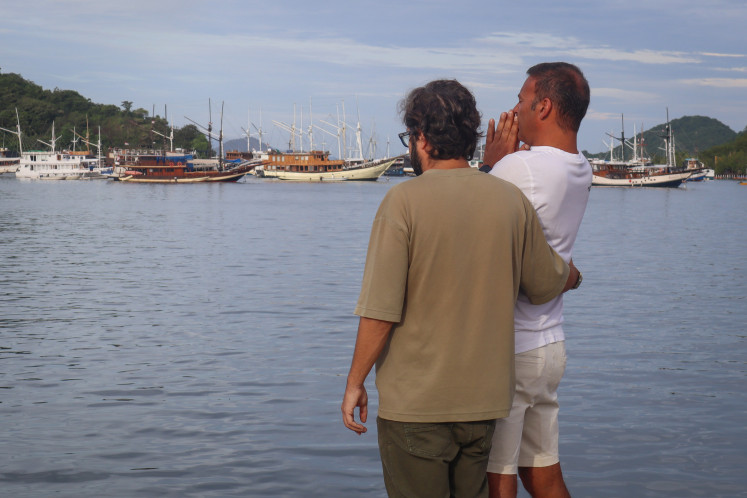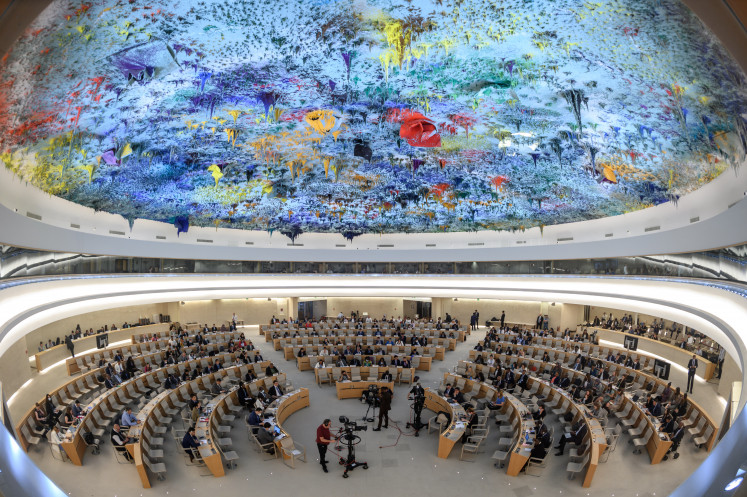Popular Reads
Top Results
Can't find what you're looking for?
View all search resultsPopular Reads
Top Results
Can't find what you're looking for?
View all search resultsRemembering Thich Nhat Hanh, who taught mindfulness, ‘interbeing’
As a form of active engagement with every moment of daily life, the practice of mindfulness has energized people across time and place.
Change text size
Gift Premium Articles
to Anyone
I
t was early on Saturday morning last week that I received a phone call from the pious Buddhist and humanitarian Sudhamek AWS, who told me of the passing of the beloved Zen master Thich Nhat Hanh at the age of 95. After suffering a severe stroke in 2014, Hanh chose to live out his remaining days at Từ Hiếu Temple in Vietnam, where he passed away peacefully.
As an engaged Buddhist, Sudhamek spoke fondly of the cherished leader, who was affectionately known by his students as Thay, or teacher in Vietnamese. Thay carefully and intentionally transformed ancient Buddhist teachings to allow them to be more accessibly applied to the challenges of our contemporary lives, while keeping the integrity of the powerful traditions of Buddhism.
The teachings stayed true to the distinctive concepts of mindfulness and “interbeing”, which are uniquely Buddhist and remain relevant to the current state that our world exists in.
In honor of his teachings and practices, Sudhamek conversed with me in remembrance of the great legacy of Thay as a global spiritual leader in the teachings of mindfulness and interbeing, among others.
Whether you are someone intricately familiar with his philosophies through his writings and talks or someone hearing his name for the first time today, Thay’s passion for mindfulness and interbeing, as Sudhamek articulated, lives on within each of us, connecting and uniting us together as one, as equal and interdependent human beings.
Mindfulness is one of the essential teachings of Buddhism. It is not in the Jewish, Christian or Islamic vocabulary.
“Mindfulness is a Buddhist word,” Thay wrote in Going Home (2013). “Mindfulness is to be aware of everything you do every day. Mindfulness is a kind of light that shines upon all your thoughts, all your feelings, all your actions and all your words. Mindfulness is the Buddha.”
And according to the Buddha, Thay writes in Happiness (2008), “Mindfulness is the source of happiness and joy. It is the energy of being aware and awake to the present.”
Thus, mindfulness awakens us to the state of awareness in the present moment. We learn from Thay how we can use mindfulness to live happily in the present moment. “Be happy in the moment, that’s enough. Each moment is all we need, not more,” so Sudhamek (2020) speaks of his passion for mindfulness through the precious words of Mother Teresa.
A call to enjoy happiness in the present moment is crucial in this fast-paced world, because, as Sudhamek (2020) aptly puts, “Human life has been controlled by the habit of running. And the practice of mindfulness helps us to stop our habit of running so that our mind establishes and presents in the here and now. This is indeed the source of creativity, productivity and happiness.”
Properly understood, mindfulness is not simply an idea, skill or technique. It is also a process, a practice and, more importantly, the energy of being fully aware and awake in the present moment and in every moment of daily life. As a form of active engagement with every moment of daily life, the practice of mindfulness has energized people across time and place.
This is exactly what has happened as a result of Thay’s great and long-lasting influence as the father of mindfulness, not only in the East but also in the West. He was a trailblazer in bringing the Buddhist teaching of mindfulness to the West.
He found his place in the United States and Europe. Over the course of his dedicated life, Thay cultivated various local mindfulness practice communities known as sanghas, built communities of hundreds of nuns and monks and founded many monasteries across the US and Europe. His thousands of students breathe life into his teachings on mindfulness in schools, workplaces, prisons ––every corner of life – worldwide.
Surprisingly, Thay never tried to convert his thousands of followers to the Buddhist tradition.
“When young people come to Plum village,” Thay wrote in Living Buddha, Living Christ (2007), “I always encourage them to practice in a way that will help them go back to their own tradition and get rerooted. If they succeed at becoming reintegrated, they will be an important instrument in transforming and renewing their own tradition. After an interfaith retreat in Santa Barbara, one young man told me, ‘Thay, I feel more Jewish than ever. I will tell my rabbi that a Buddhist monk inspired me to go back to him.’”
It is clear that Thay taught us a great tradition of equal respect for all humans, regardless of differing beliefs. The continuous practice of mindfulness has inspired countless numbers of people not only to be personally aware and awake in the here and now but also to be more socially engaged with many aspects of daily life.
In a video titled Awakening the Heart (2013), Thay offered his social thought on mindfulness as “the continuous practice of touching life deeply in every moment of daily life. To be mindful is to be truly alive, present and at one with those around you and with what you are doing.” A sense of being socially present and engaged with those around you in this time of crisis for humanity reinforces a strong belief in the importance of interbeing, since Thay invented the novel teaching of interbeing to signify the fact that human life has to be in touch not only with the reality of mind, but also with the reality of the world we live in.
In an interview with Mehrotra (2003:39), Thay proposed his notion of “interbeing as co-being. You cannot be by yourself alone. You have to ‘interbe’ with everybody and everything else.”
As Sudhamek illuminated to me, the essence of interbeing centers around embracing the full awareness of both the interdependence and co-arising nature of community, business and even government. This paradigm of interdependent co-arising is the key to growing together and forging a brighter future for Indonesia and world.
***
The writer is a Muhammadiyah scholar.

